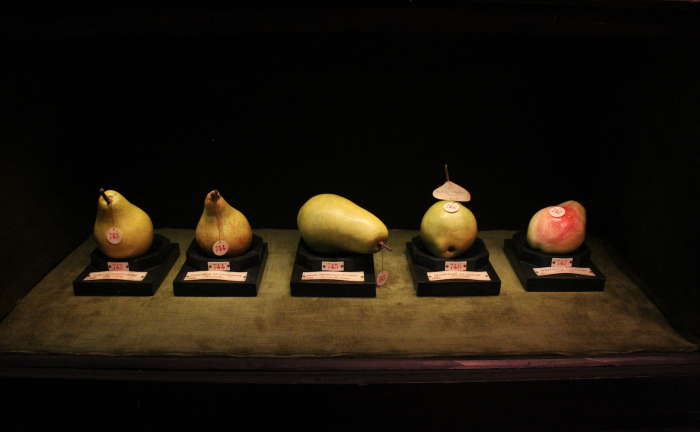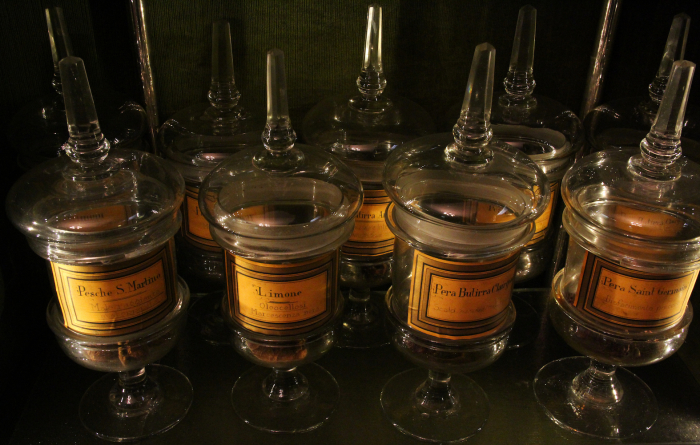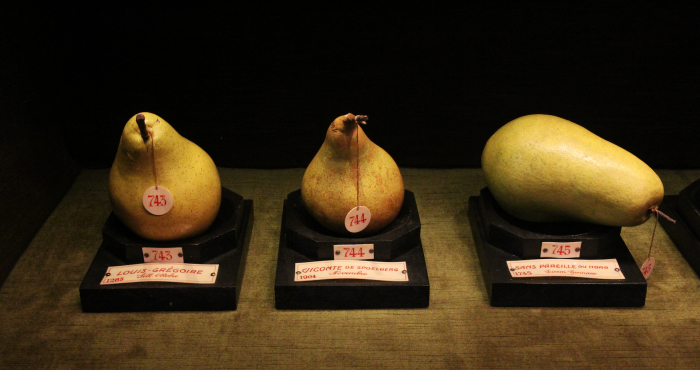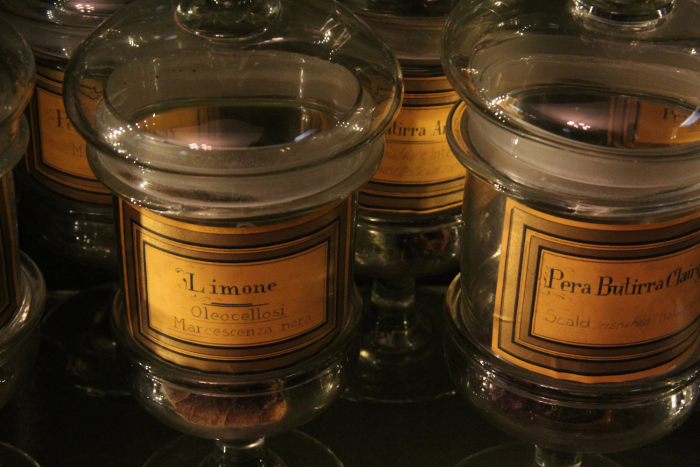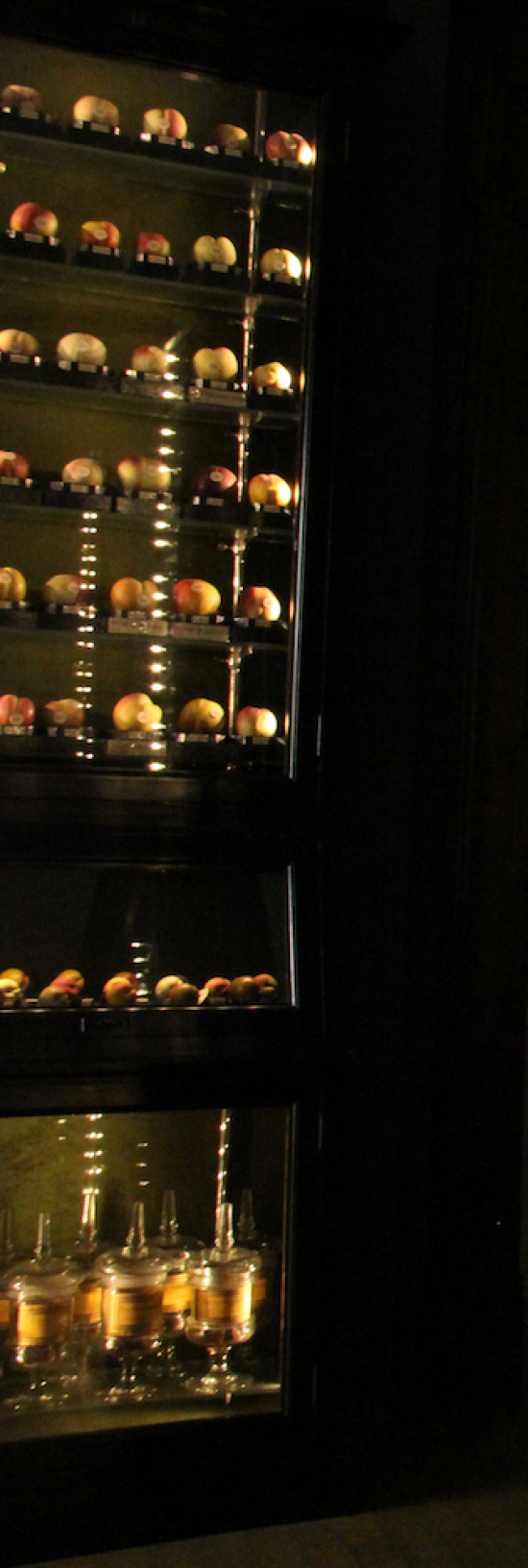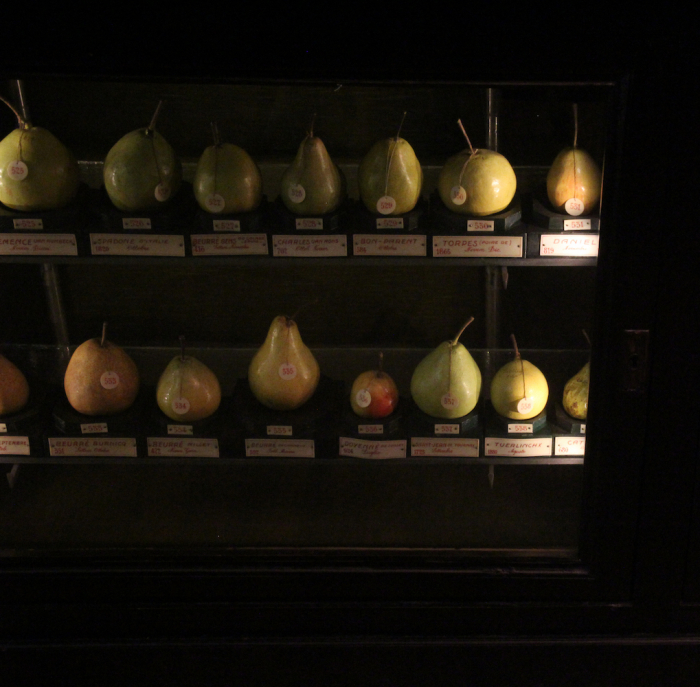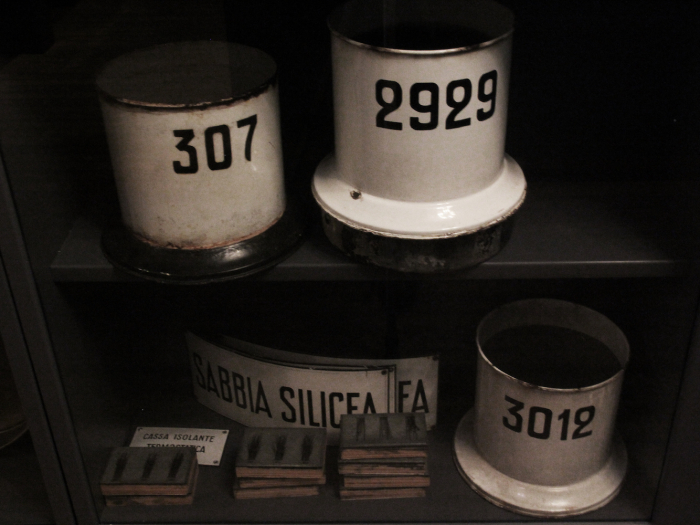Museo della frutta “Francesco Garnier Valletti”
by Cristina Mirandola
Inside the same building where the Museum of Human Anatomy “Luigi Rolando” and the Museum of Criminal Anthropology “Cesare Lombroso” are located, we came across the Museum of Fruit: a collection of more than one thousand “plastic artificial fruits” modelled by Francesco Garnier Valletti (Giaveno 1808 – Turin 1889).
The following texts have been written by the Collection Manager, Dr. Paola Costanzo, that has kindly granted us permission to take and publish pictures and provided us with a text that briefly explains who Garnier Valletti was and that illustrates the purpose of the Museum of Fruit.
“A singular personality and an unsurpassed modeller of artificial fruits, Francesco Garnier Valletti was nevertheless a man of his time. In an epoch whose cultural foundations were rooted in positivist knowledge, scientific documentation, classification, observation and study of nature, Garnier Valletti devoted his entire life to the search for a perfect imitation of fruits, working to be of help to agronomic science. In Italy, especially in Tuscany, and in the rest of Europe wax modelling and pomological model-making boasted a tradition dating back to the mid-eighteenth century. Wax modellers produced models that served as support to the teaching of medical and botanical sciences. The exemplars of artificial fruit were made not only of wax but also of chalk or pressed paper coated with chalk. In spite of these presences, Garnier Valletti was a complete autodidact. Nevertheless, and always working by himself, he reached the apex of perfection at the height of maturity. To his obvious artistic sensibility and unquestionable manual skills he added a great botanical knowledge acquired through the years: he stayed for a long time in the most important European cities of the period, at the imperial courts of Vienna and St. Petersburg, where he participated in the numberless horticultural and agricultural exhibitions, with an excellent reception from both the public and the press.
Garnier Valletti made hundreds of chalk moulds in which he cast the mixtures of his own invention made of water, ash, alabaster powder, chalk, wax and above all natural resins (dammar and colophony) that gradually replaced his first wax productions. Using these tools he made more than 1,800 flawless models, strictly scientific, that accurately represented the fruit and vine germoplasm. He reproduced them several times in order to be of help to natural history museums, educational institutes, nurserymen and collectors, as can be seen also in his posthumous catalog, published by his daughter Paolina in 1905 in the attempt to commercialize the considerable production of her father. Garnier Valletti kept the formula of the mixture secret. This formula used to vary according to the kind of reproduced fruits, because he pushed his perfectionism as far as to create exemplars that not only amazingly resembled the natural ones but had the same weight. After having painted them, he used to pass a transparent paint over the fruits – glossy on apples and matt on pears – then employed various techniques to reproduce the stains, irregularities and rustiness peculiar to the different cultivars. On the still sticky paint spread out on peaches and apricots he sprinkled wool powder (coarser for the peaches, finer for the apricots) pounded in a mortar and then sieved, in imitation of its pubescent surface. In order to reproduce the appearance of the wax bloom, on the plums he blowed the powder obtained by grinding pebbles of a suitable colour that he collected on river banks. The search for perfection brought him to insert real pips in the grapes, those of the reproduced species of course, whereas he inserted the original achenes on the strawberries. As grapes, ribes, gooseberries and any other fruit in grapes couldn’t be produced with moulds (also because berries are not equal to each other) he engaged in reproducing them through an arduous manual manufacturing process carried out berry by berry.
Inclined to perfection, Garnier Valletti was a loner. He was alone on the eve of his death, by then an eighty-year-old man, and resolved to make his “secrets” known when he was offered a chair of “artificial pomology” by the Royal Technical Institute “Sommeiller” in Turin. Nevertheless, after a few months, his classes came to an end because the master died of pneumonia on the 8th October 1889. None of his pupils managed to equal his skills and attain the same perfection and verisimilitude, not even Michele Del Lupo who a few years later published a pomology handbook where he sketched a short biography of his master.
Francesco Garnier Valletti is still the last and greatest master of “artificial pomology”.
Officially opened in 2007, the Museum offers the opportunity not only to discover the amazing collection of artificial fruits created by Francesco Garnier Valletti, but also the historical-scientific heritage of the Royal Station of Agrochemicals, instituted in Turin in 1871. It includes a large scientific library, an interesting archive, the chemical laboratories and a considerable collection of scientific tools with the aim to rebuild the relationship between science and agriculture in the light of current and widespread questions. … The museum compares past and present and explains the reasons that inevitably brought to the abandonment of crops, or anyway to a drastic reduction of the varieties of fruits, mainly since cold conservation began to allow other forms of distribution of agricultural and food products, meeting the needs of a market which had deeply changed as well. The museum therefore tries to contribute to the debate about the very topical question of the preservation of biodiversity and, more indirectly, to the value that appreciation and respect for diversity have in the daily life of everybody, through big and small things, for the future of humanity itself.
Museo della Frutta “Francesco Garnier Valletti”
Via Pietro Giuria 15 – Torino – tel. 011 6708195
info-museodellafrutta@comune.torino.it
museodellafrutta.it
